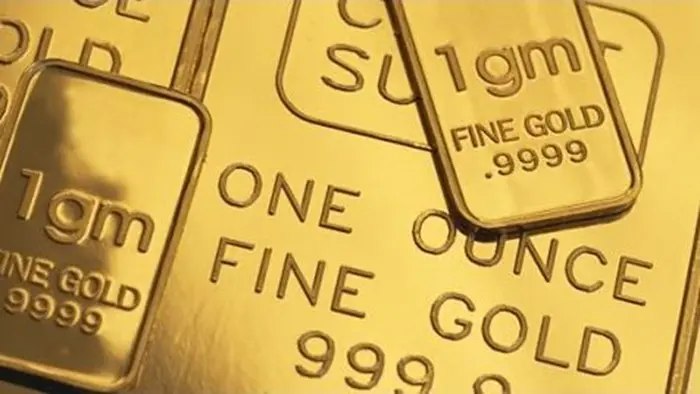Purple gold, also known as amethyst gold, is a unique and fascinating type of gold alloy that has captured the interest of jewelers and gold enthusiasts worldwide. Its distinct hue sets it apart from the more common yellow, white, and rose golds, making it a striking choice for various types of jewelry. In this article, we will delve into the properties, composition, history, and uses of purple gold, providing a comprehensive understanding of this extraordinary material.
The Composition of Purple Gold
Purple gold is an alloy, which means it is a mixture of gold with other metals. The primary component is gold, but the distinctive purple color comes from the inclusion of aluminum. The standard composition for purple gold is approximately 79% gold and 21% aluminum. This specific ratio creates an intermetallic compound known as AuAl2.
Intermetallic Compound: AuAl2
The compound AuAl2 is responsible for the purple hue of purple gold. This intermetallic compound forms a crystalline structure, which differs from the typical metallic bonds found in pure gold or other gold alloys. The unique crystal structure of AuAl2 reflects light in a way that produces the characteristic purple color.
Properties of Purple Gold
Hardness: Purple gold is relatively hard compared to pure gold. This hardness is a result of the intermetallic compound’s crystalline structure. However, it also makes purple gold more brittle, which can pose challenges in jewelry making.
Color: The most notable property of purple gold is its color. The purple hue can vary in intensity depending on the exact composition and manufacturing process.
Density: Purple gold has a lower density than pure gold due to the addition of aluminum. This makes it lighter, which can be advantageous in some jewelry applications.
See Also: 8 Ways To Buy Gold Bars In The US
History and Discovery of Purple Gold
The creation of purple gold dates back to the early 20th century. It was first produced and studied by metallurgists and chemists interested in the properties of gold alloys. The distinct color made it a subject of interest for both scientific study and artistic use in jewelry.
Early Studies
Initial studies focused on understanding the formation of the intermetallic compound and its properties. Researchers explored various ratios of gold and aluminum to achieve the desired color and properties.
Jewelry Use
Jewelry designers soon realized the potential of purple gold for creating unique and eye-catching pieces. However, the material’s brittleness posed challenges, limiting its use in certain types of jewelry. Despite these challenges, purple gold gained popularity for its aesthetic appeal.
Manufacturing Process of Purple Gold
The production of purple gold involves several steps, each critical to achieving the desired properties and color. The process requires precise control over the composition and temperature to form the AuAl2 compound.
Melting and Alloying
The first step in creating purple gold is to melt the gold and aluminum together. This must be done at a high temperature to ensure that the metals mix thoroughly. The melting point of gold is 1064°C, and aluminum melts at 660°C. However, the alloy requires a precise temperature control to form the intermetallic compound correctly.
Casting and Cooling
Once the metals are melted and mixed, the alloy is cast into the desired shape. The cooling process is crucial, as it affects the formation of the crystalline structure. Rapid cooling can lead to defects, while slow cooling helps form a uniform crystal structure.
Annealing
Annealing is a heat treatment process that improves the properties of the alloy. It involves heating the cast alloy to a specific temperature and then allowing it to cool slowly. This process helps relieve internal stresses and enhances the alloy’s mechanical properties.
Applications of Purple Gold in Jewelry
Purple gold’s unique appearance makes it a popular choice for various types of jewelry. However, its brittleness requires careful handling and design considerations.
Rings
Rings made from purple gold are striking and distinctive. However, they must be designed to minimize stress on the material to prevent cracking. Setting stones in purple gold rings can be challenging, and jewelers often use it in combination with other, more durable metals.
Earrings
Earrings are an ideal application for purple gold, as they generally experience less wear and stress than rings. The lightweight nature of the alloy makes it comfortable to wear, and the purple color adds a touch of elegance.
Pendants and Necklaces
Pendants and necklaces made from purple gold can showcase the material’s unique color without subjecting it to significant stress. These pieces often feature intricate designs that highlight the alloy’s beauty.
Challenges in Working with Purple Gold
While purple gold is visually stunning, it presents several challenges for jewelers. The material’s brittleness is the primary concern, as it can crack or shatter under stress.
Brittleness
The crystalline structure of purple gold, while responsible for its color, also makes it more brittle than other gold alloys. This brittleness requires careful handling during the manufacturing process and limits the types of jewelry that can be made from it.
Limited Workability
Due to its brittleness, purple gold is less malleable than other gold alloys. Jewelers must take special care when shaping and setting the material to avoid damaging it. This can increase the time and cost involved in creating purple gold jewelry.
Compatibility with Other Metals
Combining purple gold with other metals can help overcome some of its limitations. For example, using purple gold for accent pieces or in combination with more durable metals can enhance the overall durability of the jewelry while still showcasing the unique color.
Care and Maintenance of Purple Gold Jewelry
Proper care and maintenance are essential to preserve the beauty and longevity of purple gold jewelry. Due to its unique properties, purple gold requires specific attention.
Cleaning
Cleaning purple gold jewelry should be done gently to avoid damaging the material. A soft cloth and mild soap solution can be used to clean the surface. Avoid abrasive cleaners or brushes, as they can scratch or damage the alloy.
Storage
Storing purple gold jewelry properly can help prevent damage. Keep pieces in a soft-lined jewelry box or pouch to avoid contact with harder materials that could cause scratches or cracks.
Handling
Handling purple gold jewelry with care is crucial. Avoid exposing it to excessive force or stress, which can lead to cracking. When not wearing the jewelry, store it safely to prevent accidental damage.
Purple Gold in Modern Jewelry Design
In modern jewelry design, purple gold continues to be a sought-after material for its unique aesthetic. Designers incorporate it into various styles, from classic to contemporary, to create one-of-a-kind pieces.
Innovative Designs
Innovative jewelry designers use purple gold to create striking and unconventional pieces. The material’s distinctive color allows for bold and creative designs that stand out from traditional gold jewelry.
Combination with Other Materials
Combining purple gold with other materials, such as gemstones, diamonds, or other metals, can enhance its visual appeal and structural integrity. Designers often use purple gold as an accent or centerpiece, complemented by more durable materials.
Custom Creations
Purple gold is popular for custom jewelry, where clients seek unique and personalized pieces. The rarity and distinctiveness of purple gold make it an excellent choice for bespoke jewelry that reflects individual taste and style.
Purple Gold: A Symbol of Uniqueness
Purple gold’s rarity and distinctive appearance have made it a symbol of uniqueness and individuality in the jewelry world. It appeals to those who appreciate unconventional beauty and seek pieces that stand out.
Rarity
Purple gold is less common than other gold alloys, contributing to its appeal. The specialized process required to produce it and the challenges in working with the material make purple gold jewelry relatively rare.
Personal Expression
For many, purple gold jewelry represents a form of personal expression. Its unique color and limited availability make it an ideal choice for those who want to showcase their individuality through their jewelry.
Conclusion
Purple gold is a remarkable and unique gold alloy that continues to captivate jewelers and jewelry enthusiasts. Its distinct purple hue, resulting from the intermetallic compound AuAl2, sets it apart from traditional gold alloys. Despite its challenges, such as brittleness and limited workability, purple gold remains a popular choice for creating stunning and unique jewelry pieces.
Understanding the properties, history, and applications of purple gold can enhance appreciation for this extraordinary material. Whether used in rings, earrings, pendants, or custom creations, purple gold offers a striking and elegant alternative to conventional gold jewelry. Its rarity and distinctive appearance make it a symbol of uniqueness, appealing to those who value individuality and unconventional beauty in their jewelry.
Related topics:






























